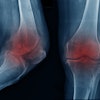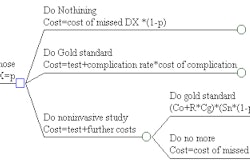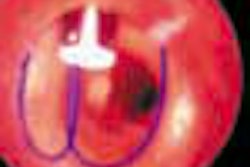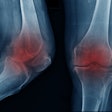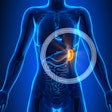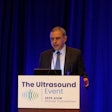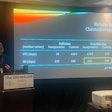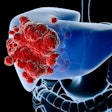The biological processes associated with menopause ensure that uterine fibroids generally shrink of their own accord in older women. But for those still plagued by the tumors, uterine fibroid embolization (UFE) may be an option, particularly for women on hormone replacement therapy (HRT).
UFE has become increasingly popular as a noninvasive alternative to hysterectomy, although the majority of women who undergo UFE are premenopausal.
Investigators from Weill Medical College of Cornell University in New York City followed five women who underwent UFE to treat continued postmenopausal fibroid growth. Three of the patients had pain or bulk-related symptoms attributed to fibroids, while the other two had complained of heavy bleeding. All but one of the patients was on HRT.
According to the results, the procedure was a success in all five patients. A six-month follow-up with MRI showed an overall 69% reduction in dominant fibroid volume and a mean uterine volume reduction of 27%.
"The procedure is technically feasible. Symptomatic response was as good as in premenopausal women," said Dr. Neil Khilnani in a presentation at the 2002 Society of Interventional Radiology (SIR) in Baltimore.
However, Khilnani did notice a difference between the women on HRT and the one patient who was not. In the HRT group, patients demonstrated "enlarged, tortuous uterine arteries, as is usually seen in premenopausal women," the group wrote in an accompanying abstract. The non-HRT patient had small uterine arteries, which is a typical feature of menopause. The smaller arteries could make the procedure technically more difficult to perform on non-HRT patients, Khilnani said.
Patient perceptions of the benefits and drawbacks of UFE are another issue. Khilnani and his group originally evaluated 20 women for this study, but 15 opted for surgery because of the small risk of leiomyosarcoma that has been associated with UFE. Published case studies have reported on underlying cancer in postmenopausal women that was not diagnosed prior to UFE (Journal of Vascular and Interventional Radiology, December 2001, Vol.12:12, pp. 1449-1452; Journal of Reproductive Medicine, March 2001, Vol. 46:3, pp. 278-280).
By Brian ReidAuntMinnie.com contributing writer
May 13, 2002
Related Reading
BioSphere uterine fibroid embolization device comparable to hysterectomy in study, April 9, 2002
UAE fights fibroids, paves way for pregnancy, April 9, 2002
Pelvic MRI proves more reliable than ultrasound for uterine fibroids, April 8, 2002
Uterine artery embolization shrinks fibroids; most patients satisfied with results, March 29, 2002
Copyright © 2002 AuntMinnie.com
